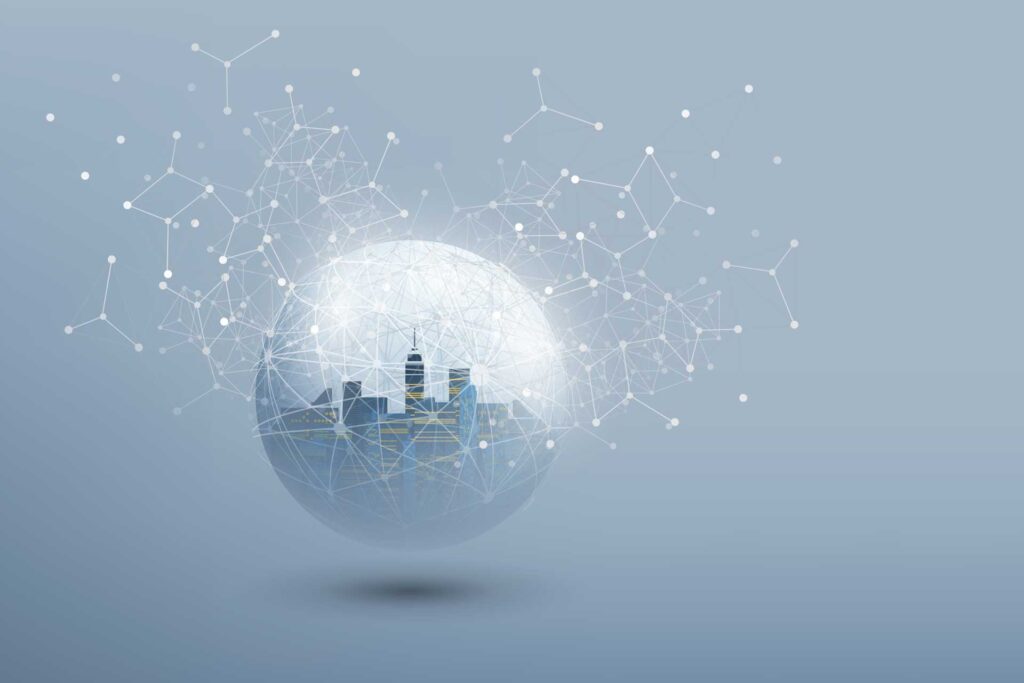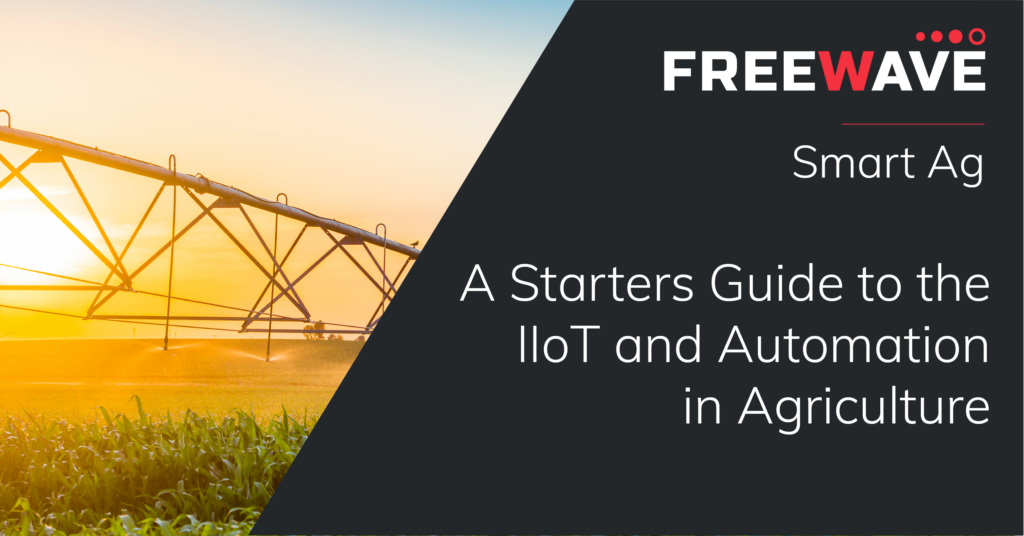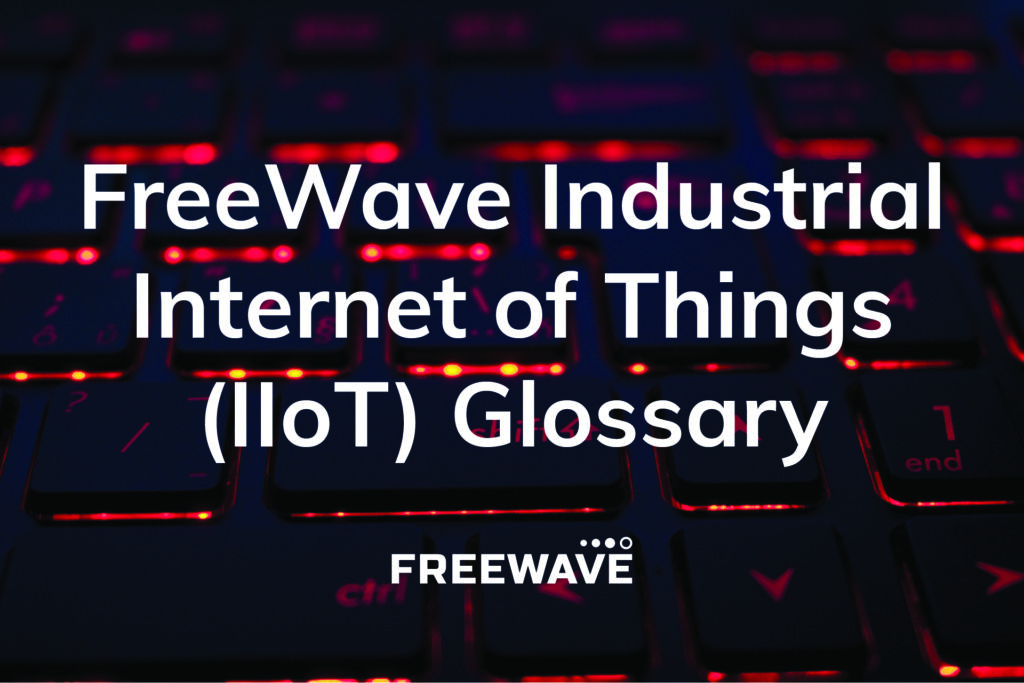Increasing Healthy Food Access and Improving Yields With Harvest Automation

Increasing Healthy Food Access and Improving Yields With Harvest Automation What is automation in agriculture, and how are farmers using robots and other technologies to streamline food production? Our guide explains it all. From farm to table, technology in agriculture is quickly becoming an essential part of how Americans access healthy food. Experts anticipate explosive population growth in the coming years, and we expect agricultural automation to increase with it. But how exactly are farmers using harvest automation? And how are they using robots and drones to grow crops safely and cost-efficiently? Here’s an introductory guide to the state of automation in farming today: What Is Automation In Agriculture? Automation in agriculture relies on technology to streamline and optimize the process of food production in traditional farming. From drilling to planting to harvesting crops, automated farming technology is becoming more prevalent at all levels of the growing process. In 2017, TechCrunch estimated that $1.7 billion had been invested in automation farming technologies, a considerable increase from just a decade earlier. How Can Farming Be Automated? Automated farming tools aren’t only used for harvesting crops. Here are just a few examples of how technology is utilized throughout a season: Robotics are deployed to seed and weed areas of a farm. Computer sensors help identify problem areas, which reduces large-scale pesticide use in areas that don’t need it. Drones monitor weather conditions, assess soil states, and even render decisions without contacting the farmer. Beyond the farm and into the warehouse, forklifts are being replaced by automated guided vehicles (AGVs), which can load and unload food trucks, transport items across warehouses, and operate in cold storage climates for longer than human workers can. How Has Automation Affected Agriculture? Automation relies on remote sensors and other tools to more efficiently grow, monitor, and harvest crops. Using the Industrial Internet of Things (IIoT), the farmer makes real-time judgment calls unnecessary. Drones and robotic devices can collect data and interact with other computer systems and make critical decisions. For example, tech tools that determine soil moisture levels and seed population are being utilized more frequently. Farmers rely on absolute precision to grow their crops. As automation tools become more adept at maneuvering through agricultural challenges (weather patterns, for example), there’s a strong possibility it will become the go-to way to produce food. Is Automation In Agriculture a Good Thing? There are many advantages to automated farming, many of which are related to the ever-growing population of humans on earth and their need for accessible, healthy foods. The UN expects the world’s population to grow by 2 billion people between now and 2050. With a world population of just under 10 billion, it’s more important than ever to think critically about how the farming industry can adapt to the growing number of hungry mouths to feed. Here are some of the advantages and drawbacks of farming automation. Advantages of Agricultural Robots Lower labor costs (improves yields in less time) Provides more food at affordable costs to consumers A potential solution for growing population concerns Trustworthy technology simplifies the job a farmer has to do Enables farmers to hire less staff, giving them wider profit margins Less human error Drawbacks of Agriculture Robots Initial technology investment costs can be steep Potential trust issues with evolving technologies Maintenance costs High energy requirements The Future of Harvest Automation With a more than 30-year decline in the farming job industry and an apparent need for large-scale food development solutions, it’s pretty clear that harvest automation is here to stay. The recent COVID-19 pandemic has forced many American industries to take a hard look at artificial intelligence devices for food production. Going forward, more precise tools will emerge that make a farmer’s job easier and more profitable. Artificial intelligence will continue to improve, and both consumers and landowners will benefit from the round-the-clock abilities of field technology that no farmhand can match. Check out how our Industrial IoT Edge Platform can transform your operations today.
IIoT For Electric Utilities: The Past, Present, and Future

Electric companies are poised to become future IIoT leaders. Here’s why. Primarily driven by Advanced Metering Infrastructure (AMI), the Industrial Internet of Things (IIoT) has fundamentally changed electric utilities. Technologies that let devices act as two-way communicators between consumers and utility providers paved the way for new opportunities. Digital transformation is here, and businesses have to reinvent themselves to stay competitive and relevant. Still, many electric utility providers aren’t ready to leap into Industrial 4.0. Why? Because adopting and integrating smart tech into legacy IT and OT infrastructures can seem daunting. Learning new skills is challenging and takes time, and potential setbacks, like unplanned downtime, can leave utility leaders fearful. Many utility leaders are riddled with doubts regarding the technological uncertainties of IIoT. It’s understandable. With rapid growth come growing pains. The IIoT journey from uncomplicated AMI to vast, smart grid expansions is challenging. Urbanization is quickly expanding, energy prices constantly fluctuate, legislation is always changing, and sustainability is paramount. Because of this, utilities must refine their operations to meet evolving consumer demands for sustainable, affordable infrastructures. IIoT adoption won’t happen overnight, but you have to start somewhere. Here’s how: Introduce real-time monitoring equipment like sensors, readers, and alarms into your operations. And use technology to automate processes, conserve resources, improve outcomes, and eliminate downtime. Still, understanding how IIoT can impact your business is a great place to start. How can IIoT solve your problems? The benefits of IIoT are hard to ignore. Almost no one would balk at real-time data collection or say “no” to monitoring critical system health. Who would pass on the opportunity to improve efficiency and safety? Almost no one. Let’s face it. Competition is stiff, and unhappy customers create churn. Cost and efficiency drive consumers these days. They’ll switch providers with a simple click. Customer churn is inevitable if you can’t provide reliable service. That’s why your technologies must allow you to react in real-time. Seconds count when it comes to your customers. Connecting your devices, sensors, and alarms to the Internet, lets you monitor and utilize data in real-time to: Increase efficiency Use automation Reduce errors Work remotely Enhance security Boost profits Make better decisions These are benefits you can’t afford to miss. Implementing IIoT is a surefire way to open personalized customer communication. IIoT lets you tailor services to specific customer demands. We can’t understate the value of using edge technology and wireless connectivity to remotely operate, analyze, and optimize your electric utility operations. As energycentral.com points out, “utilities who refuse to adapt or change will suffer financial losses, countless preventable maintenance issues, and a waste of resources.” How can utilities lead the next wave of IIoT? IIoT is how power and utility providers will operate in the future (many already are). Traditional energy production and distribution methods are obsolete, and the days of manual processes and zero real-time visibility are over. IIoT is transforming how utilities run vast, widespread, and remote operations, and internet-connected devices and machines are reshaping the ways utilities operate. Technology never stops evolving, and transitioning into Industrial 4.0 and IIoT isn’t an option anymore. The pandemic increased automation and digitization demands, producing a ripple effect that’ll extend into the future of IIoT. Utility companies are partnering with tech companies to create innovative solutions to improve sustainability and become more efficient. As IIoT adoption accelerates, the opportunities to provide amazing service increase exponentially. With IIoT, utilities are proactive instead of reactive. And predictive maintenance through AI lets utilities continually learn and optimize operations. It’s a new era in the power industry. And smaller utilities are outpacing massive corporations. Smaller, more agile businesses are transforming the industry with their smart business models. And these same small businesses pose a threat to established corporations digitally transforming too slow. Providers that embrace IIoT will emerge as utility leaders in the next several years. Put your business and your customers first. You can’t afford to not implement IIoT into your electric utility operations. It’s time to put your business and your customers first FreeWave is second to none when it comes to proven IIoT solutions and making the most of your data. We’re the leaders in edge computing and wireless connectivity. We’ll accelerate your digital transformation. Our technologies are fast, flexible, and easy to deploy. We’ll have you leveraging IIoT, big data analytics, and connectivity to take the guesswork out of your operations in no time. And you can do it all without a complete infrastructure overhaul. You’ve been improving your utility operations for years; why stop now? We want to take your operations to the next level. Get in touch; let’s chat.
What Does the Future Hold for IIoT, Automation, and Edge Computing?

From narrowband communications to edge computing, FreeWave continues to solve significant customer challenges with IIoT, automation, and data collection. We are excited about our 2021 product roadmap. We are making a significant leap forward into Edge Computing. This quarter, we will be releasing two new products: FreeWave Edge and FreeWave Fusion Bridge. Before we look at these new solutions and where we are heading,I’d like to take a quick look back FreeWave has worked primarily in the industrial markets for 27 years, most notably with oil and gas, utilities, and water/wastewater. We would occasionally take on side projects with the military helping out their robotics teams with drones and other technologies, but we have traditionally focused on robust, narrowband communications links. And when I say “narrowband,” I mean the very, very small bits of data that go back and forth in SCADA systems or command and control systems in general. When I came aboard four years ago, the idea was to start pivoting FreeWave toward IIoT in the edge. We began developing radio hardware in the narrowband world that would allow us to do edge computing. As a radio company, this was trailblazing stuff, and we weren’t quite aware of what we were getting ourselves into. Now, before diving deeper, I’d like to reflect on last year’s events. A Look Back at 2020 The pandemic caused us to make significant changes. FreeWave started 2020 with many legacy products and product lines, and it became hard to find the components we needed to push those products forward. We recognized that we’d need to do a significant uplift of these legacy products by rebuilding them from the ground up and ensuring that they were backward-compatible with everything else we had out in the marketplace. After all, we were still talking about 900 megahertz products! In July, we acquired a small software company with a robust solution set focused on proprietary protocols. The acquisition allowed us to focus on the edge with a whole other engineering team section, which is fantastic. Because of this acquisition, our edge computers now come native with protocol converters, which means you can translate proprietary languages brought into the cloud into any language you want. In my opinion, our transition from a primarily OEM and widget manufacturer into a full-blown software application company was a massive win. On top of that, we are currently updating a full SCADA suite that’s been well-received. What You Can Expect from FreeWave in the Next 12 Months We are excited about our 2021 product roadmap as we make a significant leap forward into Edge Computing. This quarter, we will be releasing two new products: FreeWave Edge and FreeWave Fusion Bridge. FreeWave Edge is a data platform that lets customers extract real-time information from their sensors and devices. Edge also allows users to customize alerts and data processing and connects to a customer’s preferred cloud or reporting system. Edge helps companies suffering from unreliable data (or no data at all) improve their operations and, ultimately, accelerates business outcomes. Fusion Bridge is a dual-radio WiFi bridge that introduces connectivity and sensor fusion to 900Mhz networks. New FreeWave customers often have trouble accessing on-site data and quickly transmitting the information to the home office. They’ll install on-site routers to get WiFi connectivity, which can be expensive, and the equipment is usually in the open, where it’s vulnerable to theft. Fusion Bridge enables mobile equipment with WiFi to seamlessly connect smart devices with headquarters. The tool eliminates security vulnerabilities specific to an always-on remote AP and protects on-site assets through the quick and straightforward integration of off-the-shelf wireless security equipment. The Roles IIoT and Data Collection Will Play in the Future of Industrial Automation The future roles of IIoT and data collection are significant. There have been many tire-kickers on the manufacturing side, but nothing comes close to what will occur in the next few years with the various applications coming on-board. We’re entering an exciting era. FreeWave is looking at the possibility of developing – and investing in – the different ways people handle data at the edge and how people make decisions using artificial intelligence. I think this is where many companies will focus their energy — on more of the indoor IoT market, or perhaps even with things like your thermostat. All of the stuff you interact with daily. The possibilities will be endless. Critical Advancements in Data Collection and Communication Companies increasingly want to get more real-time information and insights from their data. Folks have been able to collect a limited amount of data for at least 50 years. Still, if they needed more information, they would have to send someone out to collect data in-person and report back with their findings. In an agile and increasingly competitive world, this kind of data collection is unacceptable. People want to quickly identify urgent issues on-site and make the necessary adjustments right then and there. And with today’s technological advancements, we can do just that! For example, an HR team came to us with concerns that their workers might not be wearing helmets while on a project. They needed to ensure OSHA compliance on a remote site. Using artificial intelligence on a Well Pad, we collected and reported data to them in real-time. Why Customers Return to FreeWave for Multiple Projects We offer an exceptional product; that’s why people return to FreeWave again and again. I still hear from people calling about our first product (DGR). It’s over 20 years old and still in-use! Let’s face it; when people find a reliable, durable product that works, they will continue to come back. Our exceptional customer service is another reason customers return. We provide in-house tech support in the Boulder, Colorado, area (where we also manufacture FreeWave products), and we have a 24-hour hotline for folks needing troubleshooting and installation help. Advice to Customers Customers need to question the viability of the companies with which they
FreeWave CEO Provides Valuable IIoT and Edge Computing Insights on the Talking Industrial Automation Podcast
What Does the Future Hold for IIoT, Automation, and Edge Computing? FreeWave’s CEO chats with Talking Industrial Automation Podcast to provide valuable insight on IIoT and edge computing. Talking Industrial Automation podcast host, Lisa Richter recently sat down with FreeWave CEO Kirk Byles for a timely and informative discussion on the state of industrial automation, edge computing, IIoT, and FreeWave. Here are some key points you’ll take away from the podcast. How FreeWave has transitioned from a smaller, robust narrowband communications company to an IIoT and Edge Solutions company How FreeWave has grown over the past year and what you can expect in the next 12 months The roles IIoT and data collection will play in the future of Industrial Automation Critical advancements in data collection and communication Why customers return to FreeWave for multiple projects And lots more. You can listen to the entire podcast here!
A Starters Guide to the IIoT and Automation in Agriculture

Is your farm smart? Speak to a Freewave Smart Ag expert today. What is automation? How can automation help farmers do more with less? Is automation in agriculture a good idea? How is automation transforming the farming industry? Farmer’s exploring technology tend to ask the same questions. Here are a few of them: What is automation? How can automation transform my farming operation? Is automation in agriculture a sound practice? Why do we need smart agriculture? What is smart farming? There’s a new world of technology available to farmers. But with new technologies come new fears and confusion. It’s understandable. Farmers are afraid they’ll be left behind if they don’t embrace new agricultural technologies. They’re also worried about failure, which means many farmers are unwilling to experiment with new technologies out of a fear of losing it all. Unfortunately, their fears have resulted in an industry that’s resistant to change. Still, many farmers have embraced automation. They’ve invested not only their dollars but also their time. We don’t want to sugarcoat the subject; embracing technology isn’t an easy task. Workforce training is a significant barrier to entry for many farmers exploring automation. A farm’s workforce is diverse, often consisting of temporary, part-time, and permanent employees. The transitory nature of a farm’s employees can make technological training challenging. But the process is less expensive and less time-consuming than you might think. Farmer’s are always looking for larger yields from fewer resources, and for most, automation and the Industrial Internet of Things (IIoT) is the answer. IIoT improves agricultural operations with real-time data insights and control to enable more efficient and precise management of crops, resources, and livestock. You might have a cursory – or perhaps in-depth – knowledge of precision agriculture. For the rest of you, first, let’s talk about automation in general. What is automation in agriculture? Farm automation is an aspect of “smart farming.” It’s a technology that improves farm efficiency and automates the livestock or crop production cycle. More companies are developing agriculture-specific technologies to automate these processes with automatic watering, autonomous tractors, robotics, harvesters, and automated seeding machinery. Smart farm technologies are still relatively new, but we’ve seen growing numbers of traditional agriculture companies embrace farm automation. Even small farming operations use automation. Kyler Laird, a farmer in Indiana with a 1,700-acre farm and an engineering degree, developed autonomous machines to complete tasks like harvesting, drilling, and planting crops. He spoke to agriculture.com writer Laurie Bedford in 2017 and explained that “I’m a one-person operation. I need this technology because I really can’t afford to hire anyone. Besides, finding a skilled operator who is willing to work 24 hours a day for three or four days a year is ludicrous. I can’t hire that, but I can make that very inexpensively.” “I’m a one-person operation. I need this technology because I really can’t afford to hire anyone. Besides, finding a skilled operator who is willing to work 24 hours a day for three or four days a year is ludicrous. I can’t hire that, but I can make that very inexpensively.” – Kyler Laird, Farmer Most farmers can’t design and implement smart technologies, but you don’t have to – that’s our job. By using farm automation technology, however, farmers can drastically improve outcomes and spend far less money and time in the long run. What is “smart farming”? Smart farming, sometimes called a “third green revolution,” applies new information and communication technologies in agriculture. The technological farming revolution includes IIoT (Industrial Internet of Things), precision agriculture equipment, actuators and sensors, geo-positioning systems, big data analytics, robotics, unmanned aerial vehicles (drones), and more. You can transform your operations to deliver more sustainable and effective agricultural production through smart farming. Smart farming also benefits the environment through more efficient water use and optimizing inputs and treatments. “Smart farming can make agriculture more profitable for the farmer. Decreasing resource inputs will save the farmer money and labor, and increased reliability of spatially explicit data will reduce risks. Optimal, site-specific weather forecasts, yield projections, and probability maps for diseases and disasters based on a dense network of weather and climate data will allow cultivation of cops in an optimal way.” – 2017, PNAS Here are a few ways IIoT can improve modern agriculture: Smart ag sensors collect data surrounding soil quality, weather, crop growth, and herd health so you can track the state of your business, equipment efficiency, and workforce performance. IIoT gives you more control over internal processes and lowers production risks. You can improve distribution forecasts with better production output visibility. IIoT gives you more production control to reduce waste and improve cost management. When you can monitor crop growth or herd health anomalies in real-time, you can lessen the possibility of yield loss. IIoT process automation increases business efficiency. Smart devices allow you to automate critical production cycle processes like irrigation, pest control, fertilization, and more. Automation can enhance product quality and output. Agriculture automation gives you more control over production processes, helps you maintain higher crop quality standards, and enhances growth capacity. Sample Agricultural Automation and IIoT Use-Cases Grain-Bin Level Monitoring and Control Agriculture automation gives farmers real-time visibility into storage conditions and ensures blowers only operate during off-peak electrical hours, saving as much as 50% in energy costs. Automated Irrigation and Compliance Precision agriculture technologies let you schedule off-peak hour irrigation, allowing you to save as much as $30,000 per year in energy costs. You can automate water consumption reporting processes to ensure regulatory compliance. Herd Health Tracking Smart ag technology helps farmers monitor feed intake to improve livestock health and mitigate feed shrink. Self-Driving and Autonomous Tractors Real-time kinetics from precision agriculture technologies improve guidance and steering accuracy up to 100 times compared to traditional GPS. Intelligent Weed Control The Industrial Internet of Things (IIoT) powers high-accuracy robotic weeders to reduce herbicide consumption by 20%. We want to infuse intelligence into your agriculture operations. Making the most of automation in agriculture means ensuring field
FreeWave’s Industrial Internet of Things (IIoT) Glossary

Our exploration of terminology related to the Industrial Internet of Things. The tech world is full of buzzwords and terms unfamiliar to most people, many of which you can ignore. But there comes a time when it’s essential to walk the walk and talk the talk. Our IIoT glossary comes in handy for those moments. Here is a list of relevant IIoT terms we think you should know. Access Control Access control ensures that asset access is limited to authorized personnel and is restricted based on security and business requirements. Ambient Computing Ambient computing is the evolution and combination of gesture and voice interfaces, speech recognition, cloud computing, wearable computing, IoT, augmented reality, AI and machine learning, and the quantified self. Analytics Analytics is a systematic analysis of information (data) or statistics for the discovery, communication, and interpretation of meaningful data patterns for better decision-making. Application Domain An application domain is a functional domain for application logic implementation. Artificial Intelligence Artificial Intelligence (AI) is the development and theory of systems that can perform tasks typically requiring human intelligence, like speech, visual perception, decision-making, language translation, and speech recognition. Asset Assets are mission-critical systems, physical hardware, applications, support systems, high-impact programs, personnel, equipment, locations, and more. Attack Surface Attack surface refers to the system elements and interactions that are vulnerable to cyberattacks. Attack Vector An attack vector is a pathway by which a cybercriminal can gain access to an entity. Autonomy Autonomy is an intelligent system’s ability to independently create and select different courses of action to achieve goals based on the system’s understanding and knowledge of the world and other factors. Brownfield Brownfield refers to an existing industrial system targeted for new functionalities with zero operational disruptions. Business Intelligence Business intelligence refers to the applications, technologies, and practices for collecting, analyzing, and integrating business data to support improved business decision-making. Business Viewpoint A business viewpoint is an architecture viewpoint used to describe the purpose of establishing an IoT system by encompassing a business’s vision, mission, values, and objectives. Cloud Computing Cloud computing is a term used to describe the delivery of computing services over the Internet. Computer Network A computer network is a collection of interconnected endpoints in a many-to-many arrangement. Connectivity Connectivity refers to a system or application’s ability to communicate with other systems, networks, or applications. Connectivity Endpoint Connectivity endpoints are interfaces that provide connectivity. Control Domain Control domains are functional domains for industrial control system implementations. Cross-Cutting Concern A cross-cutting concern impacts an entire system and may also affect multiple architectural viewpoints. Cross-Cutting Function A cross-cutting function is one that can be applied across multiple functional architectural domains to address cross-cutting concerns. Cryptography Cryptography exemplifies the means, principles, and mechanisms for data transformation to hide information to prevent its undetected modification or unauthorized use. Data at Rest Data at rest is stored data that is not processed or transferred. Data Center A data center is a facility that contains connected equipment for computing resources. Data in Motion Data in motion is information that’s transferred from one location to another. Data in Use Data in use is information that’s being processed. Data Integrity Data integrity proves that data hasn’t been tampered with, altered, or destroyed in an unauthorized way. Databus Databus is a data-centric sharing system where applications exchange information in a virtual, global data space. Denial of Service (DoS) Denial of service prevents unauthorized access to resources. It also prevents time-critical operation delays. Digital Twin A digital twin, also called a virtual doppelganger, is a three-dimensional representation of IoT-enabled physical assets that can show how the asset is functioning. ECM (Electronically Commutated Motor Technology) ECM is a smart pump technology that is becoming more common in HVAC and commercial building markets. Edge The edge is the boundary between pertinent physical and digital entities, delineated by IIoT devices. Edge Computing Edge Computing encompasses the space between the network’s core and its endpoints, like local servers, including devices and infrastructure. It also includes essential network gateways that collect data and preliminary analytics before sending the information back to the core for more processing. Emergent Behavior Emergent Behavior is the behavior of a system created by the interactions of its component. Encryption Encryption is a scrambling method using a cryptographic algorithm so that only authorized people can understand the data. Endpoint Endpoints are components with computational capabilities and network connectivity. Environment Environment refers to the circumstances and setting of all IT system interactions, including infrastructure, hardware, systems, and software. Functional Component Functional components are necessary JavaScript actions. They are typically arrow functions but can also be made using the regular function keyword. Functional components are also often called “stateless” or “dumb” because they accept display data in a form mostly responsible for rendering UI (User Interface). Functional Domain Functional domain refers to the collection of functions that make up a system. Functional Framework Functional frameworks are sets of abstract and reusable functional components that can be customized, extended, and applied to many applications in a specific domain. Functional Viewpoint Functional viewpoints are architecture viewpoints that frame concerns specific to the structure and functional capabilities of IoT (Internet of Things) systems and components. Greenfield Greenfield refers to a new industrial system with no operational disruption concerns. Identity Authentication Identity authentication is a formal process of identity verification. Identity Domain An identity domain is an environment that allows an entity to use a set of identification attributes and related purposes. Identity Access Management Identify access management keeps data secure by defining and managing the roles and access privileges of individual network users. It also controls the circumstances under which users are granted – or denied – access permissions. Implementation Viewpoint The implementation viewpoint is an architecture viewpoint to address




